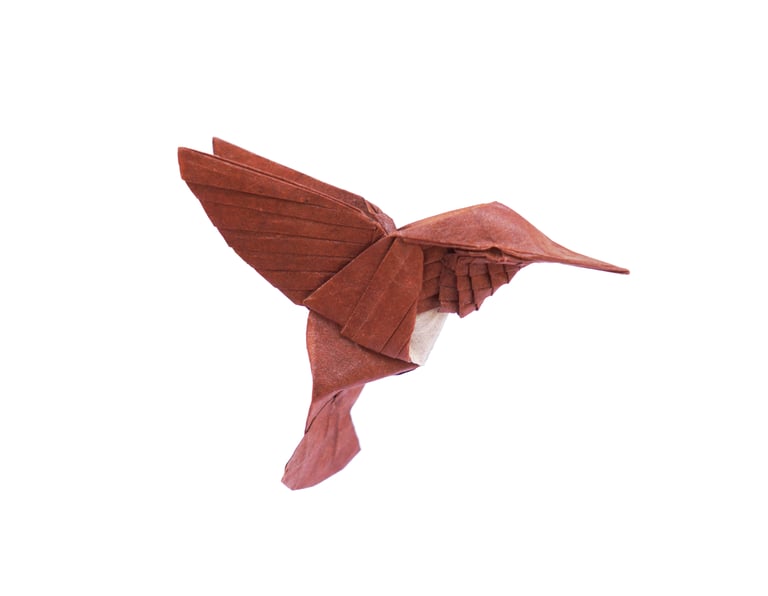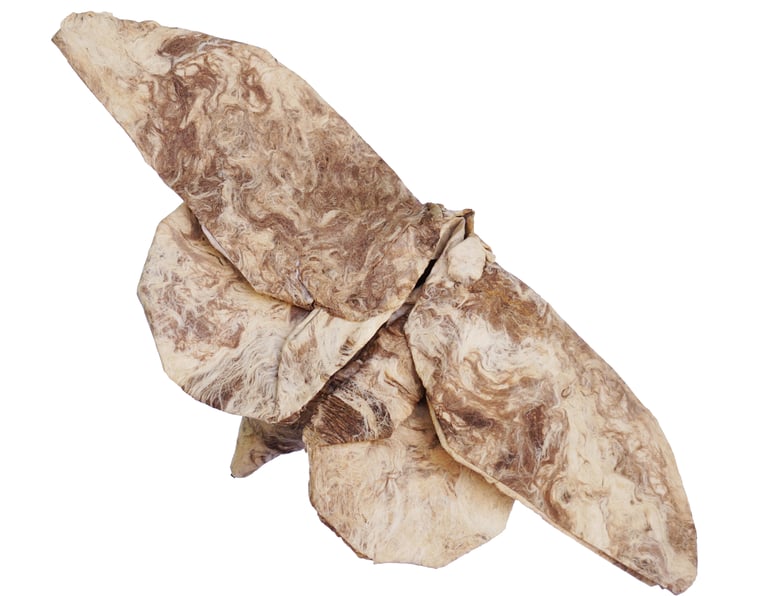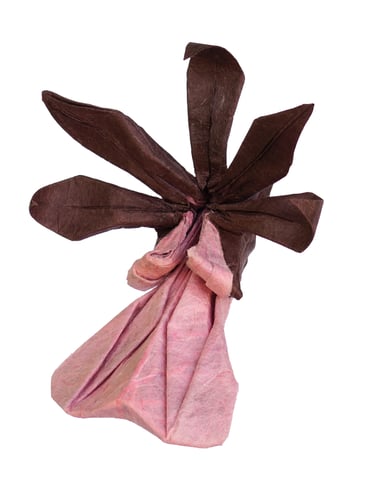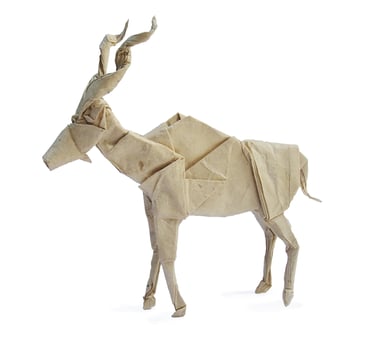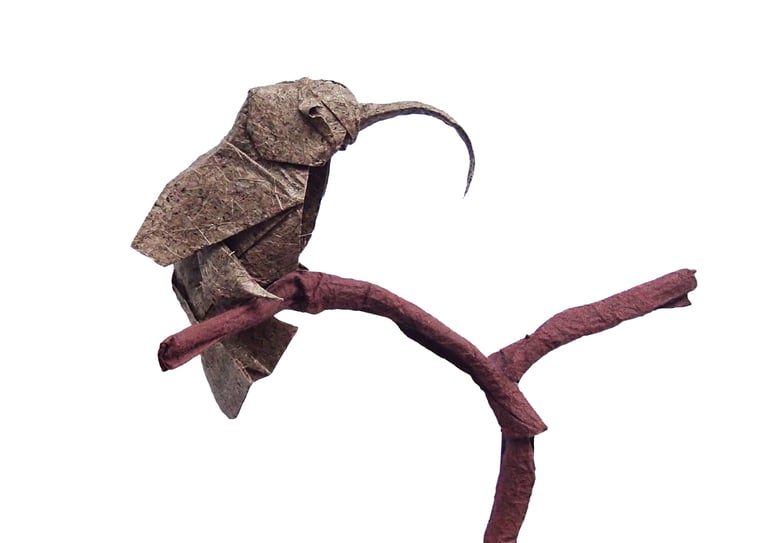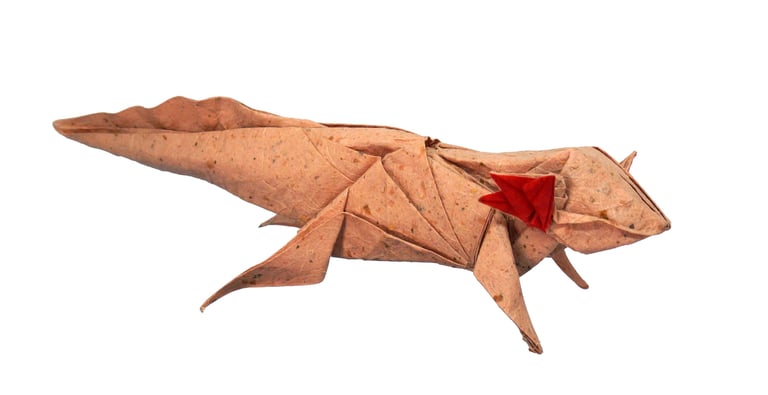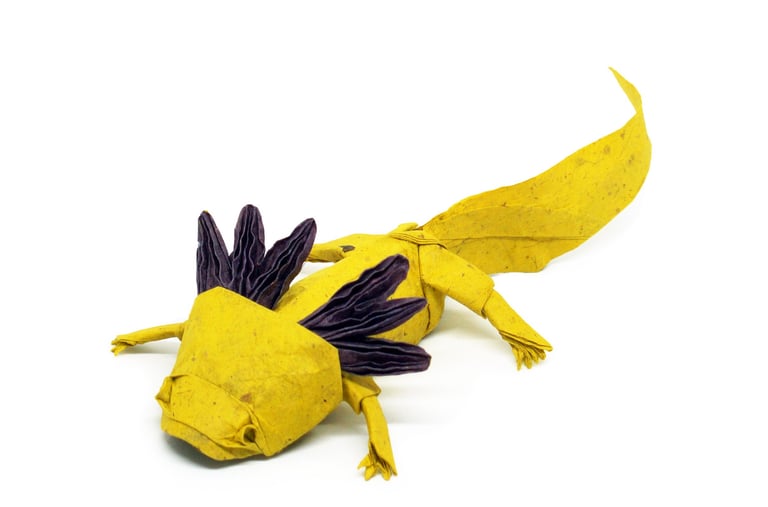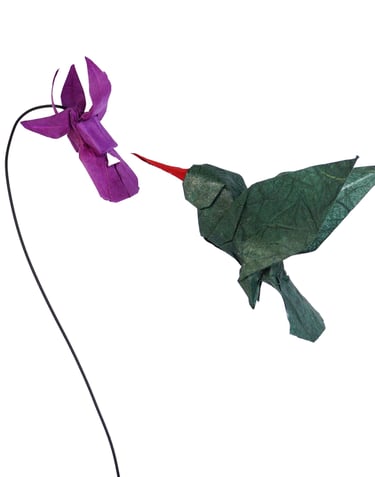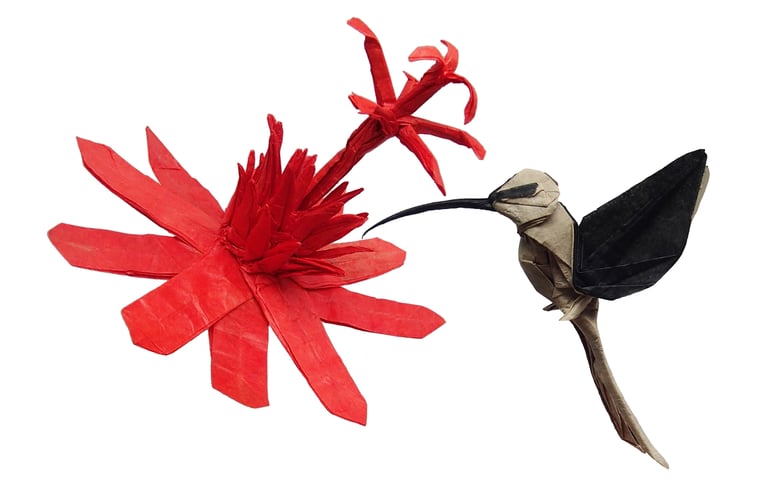

Passion flower (Passiflora vitifolia), 2020, tissue paper | Long-billed hermit (Phaetornis longirostris), 2020, Vietnamese Dó paper
Hummingbirds


Hummingbirds are among the most beautiful creatures on Earth due to their shiny colors, small sizes and graceful movements.
With over 350 species found all along the American continent, the Trochilidae family has earned a remarkable place in the traditions and the artistic production of many cultures.
This series attempts to evoke their majestic appearance and strength. All models are folded life-size.
Lesser violet-ear (Colibri thalasinus), 2022, double tissue paper


Giant hummingbird (Patagona gigas)
2020, Japanese Mingeishi paper
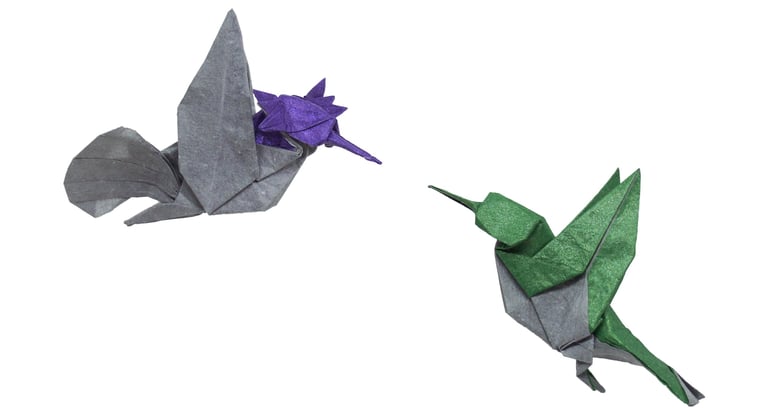

Costa's hummingbird mating (Calypte costae)
2023, Agua papel + tissue paper
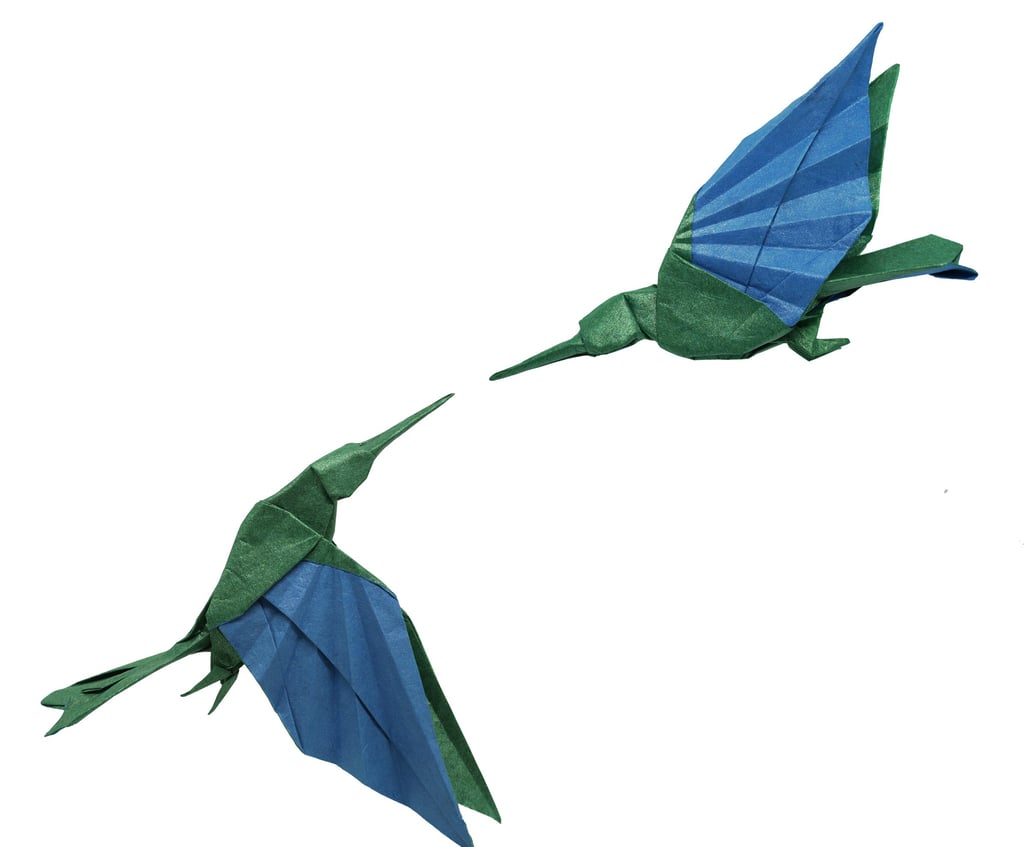

Great sapphirewing (Pterophanes cyanopterus)
2023, Japanese Mingeishi paper + tissue paper
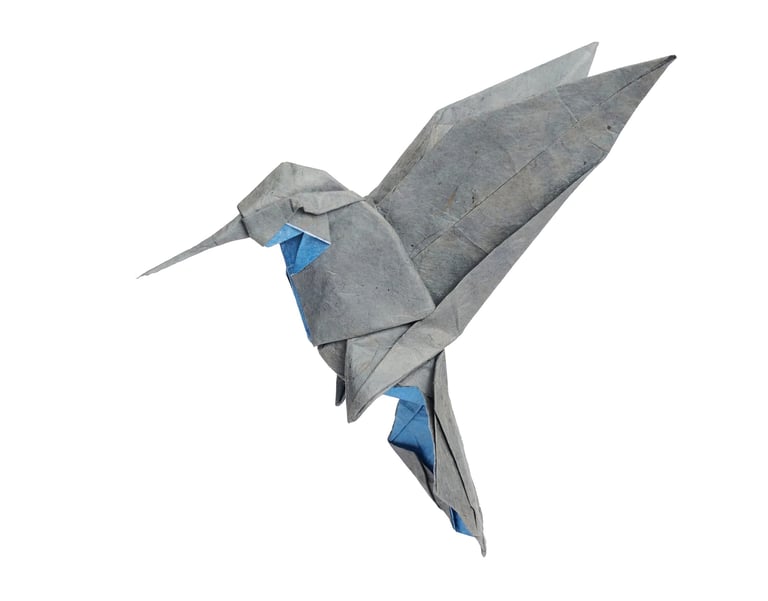

Blue-throated mountaingem (Lampornis clemenciae)
2021, Nepalese Lokta paper
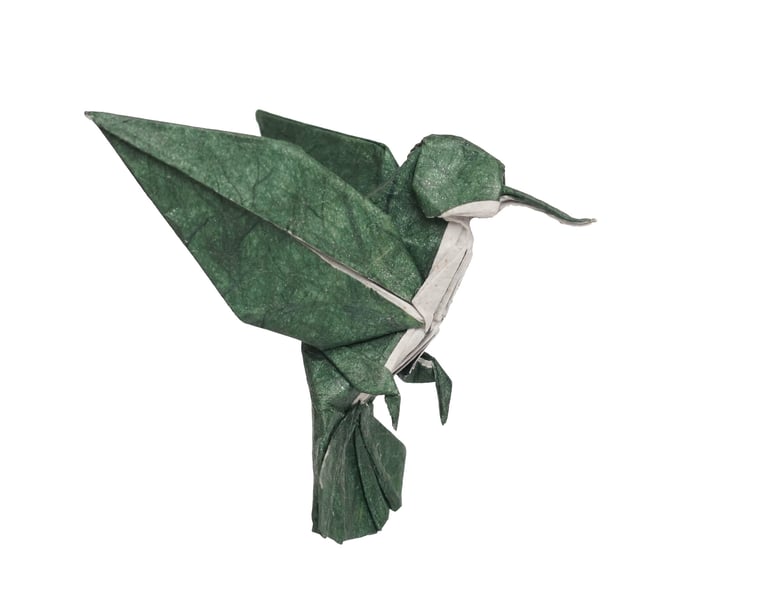

Fiery-tailed awlbill (Avocettula recurvirostris)
2021, Japanese Unryu paper
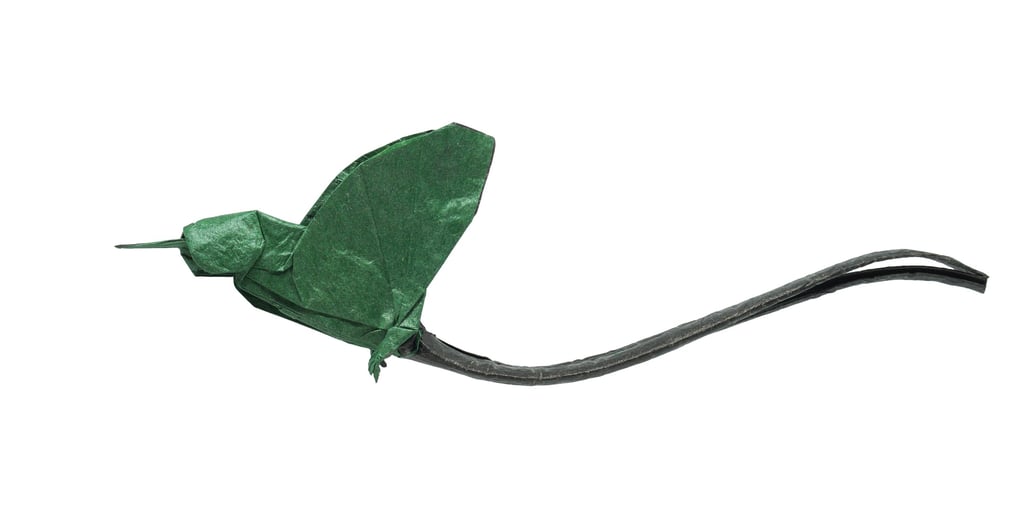

Black-tailed trainbearer (Lesbia victoriae)
2023, double tissue paper
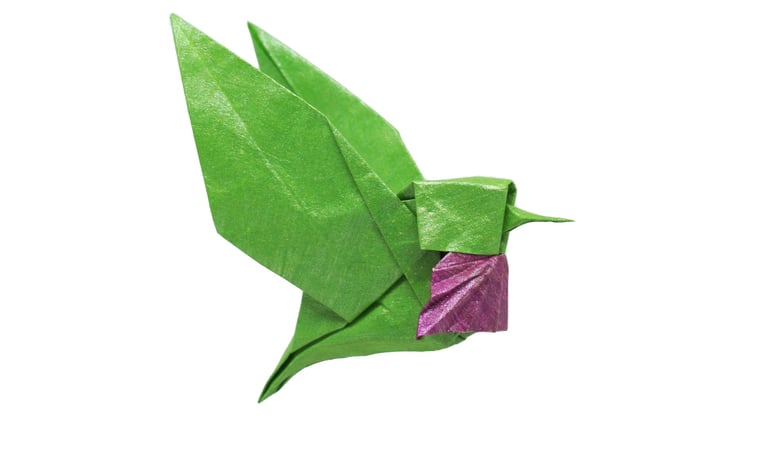

Wine-throated hummingbird (Atthis ellioti)
2023, Agua papel + tissue paper
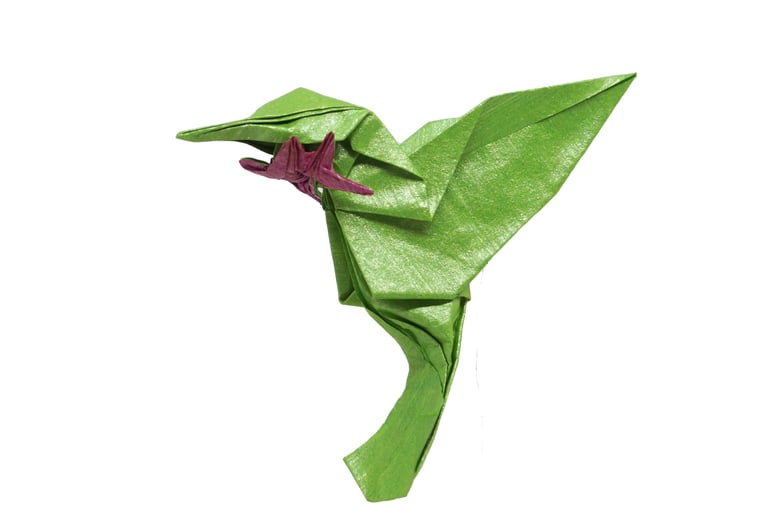

Calliope hummingbird (Selasphorus calliope)
2023, Agua papel + tissue paper
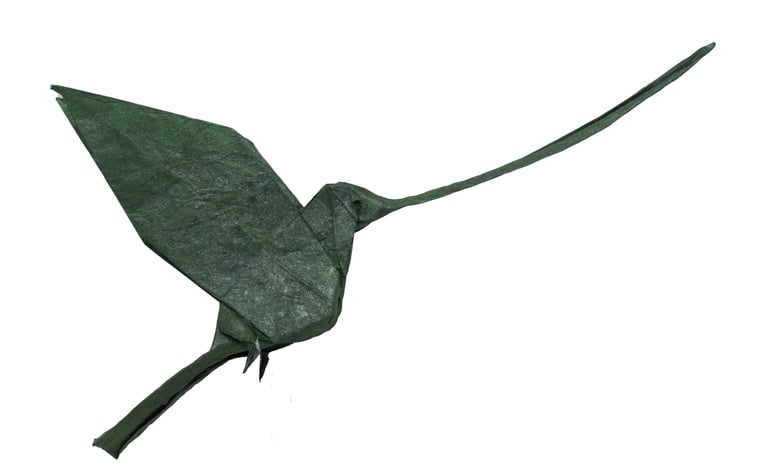

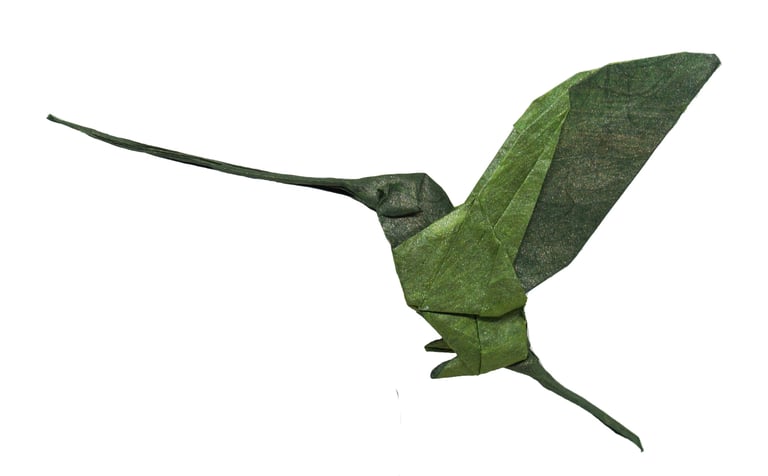

Sword-billed hummingbird (Ensifera ensifera), female & male
2023, Japanese Unryu paper


Marvelous Spatuletail (Loddigesia mirabilis)
2020, double tissue paper

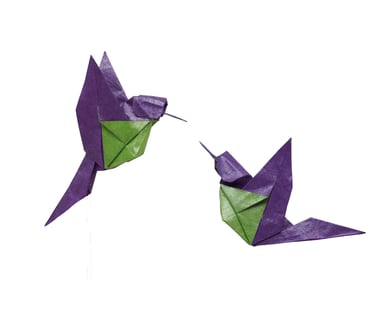
Purple-backed thornbill (Ramphomicron microrhynchum)
2023, Agua papel
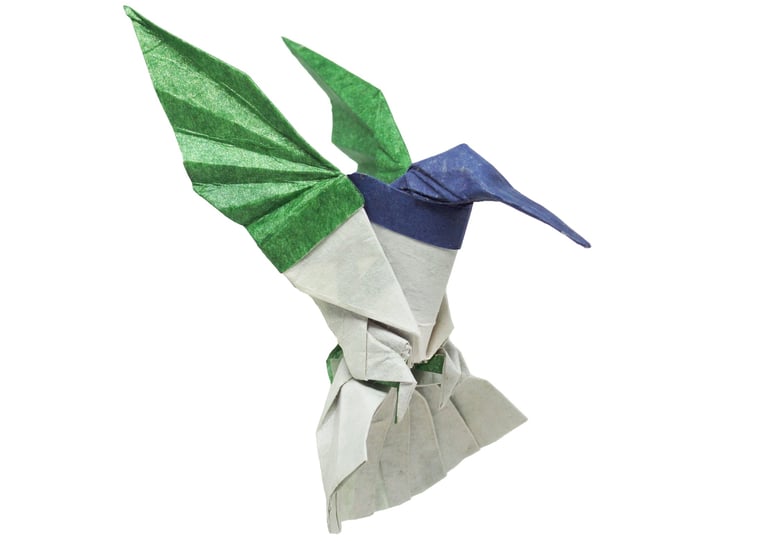

White-necked jacobin (Florisuga mellivora)
2023, Japanese Mingeishi +Agua papel
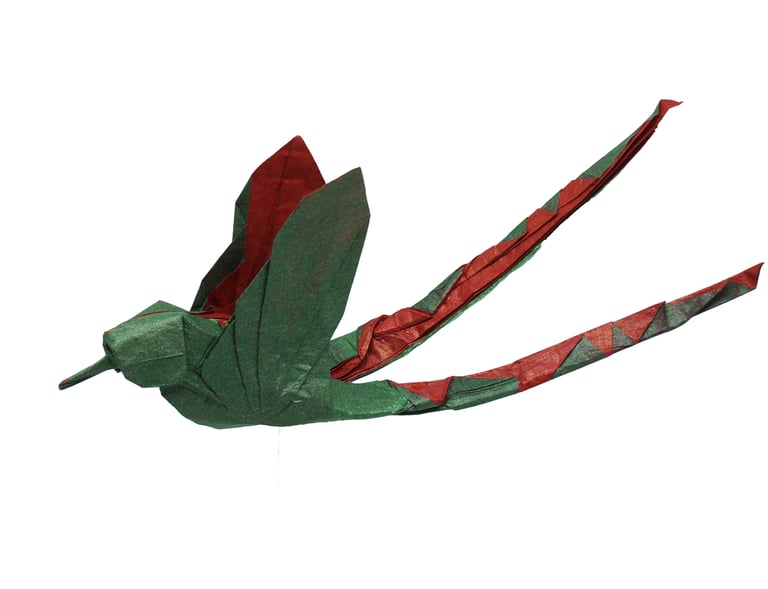

Red-tailed comet (Sappho sparganurus)
2023, double tissue paper
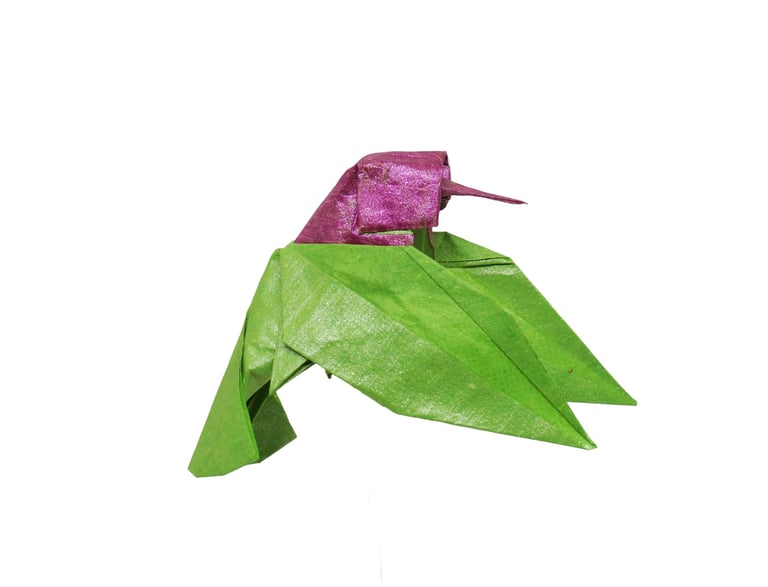

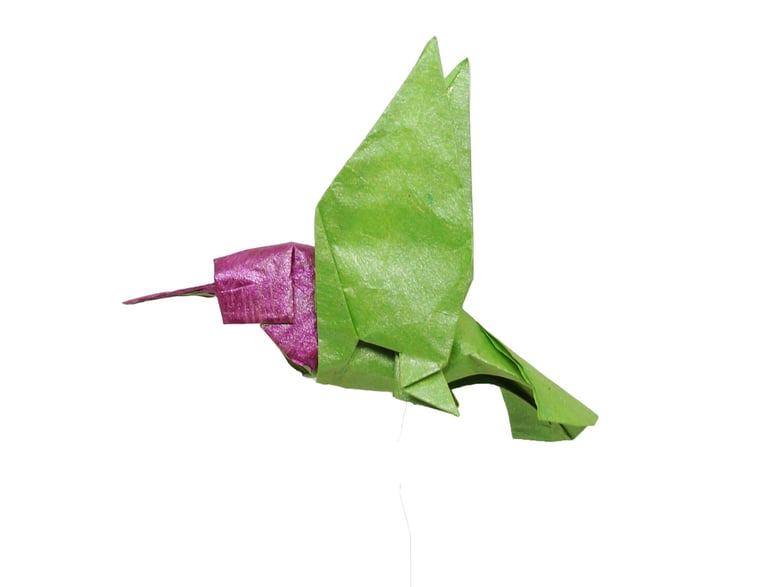

Anna's hummingbird
2021, Agua papel
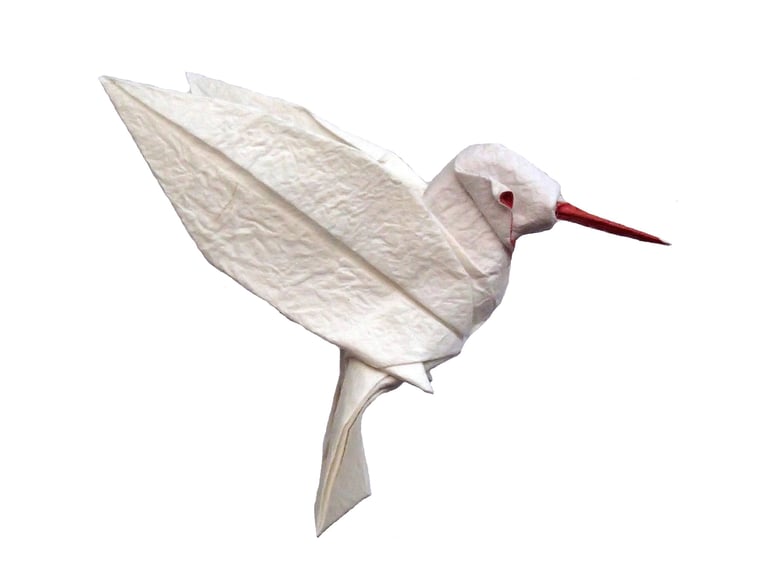

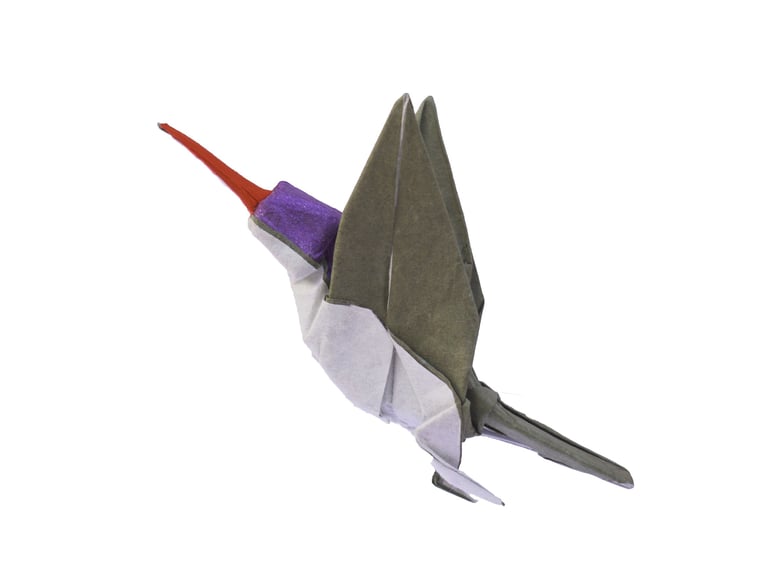

Azure-crowned (Amazilia cyanocephala)
2021, Agua papel + Japanese Mingeishi paper
Albine hummingbird
2021, Japanese Momigami paper


Rufous hummingbird
2021, Agua papel
Mexican biodiversity
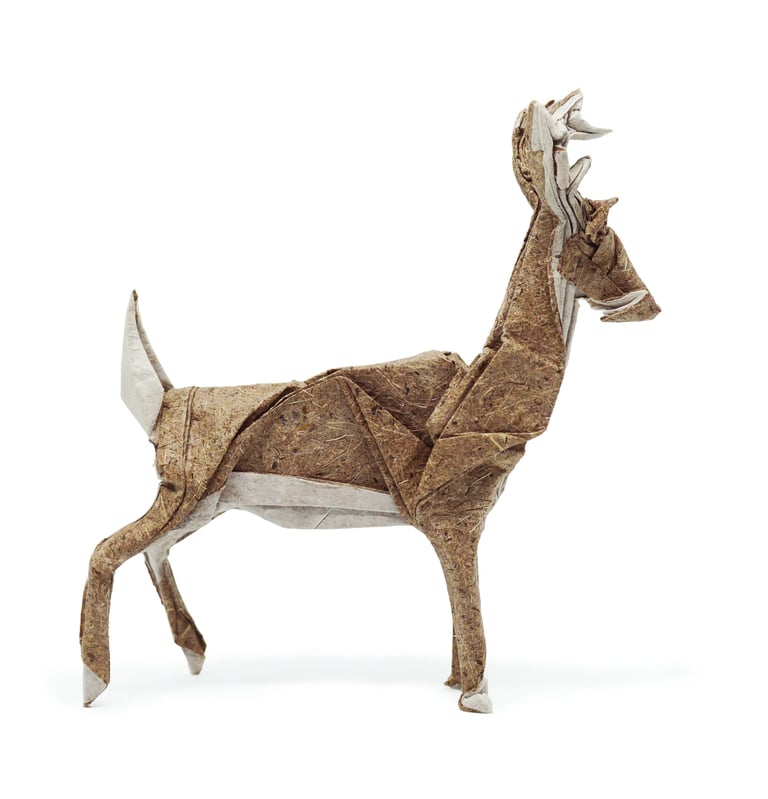

Mexico is one of the countries with the highest numbers of biodiversisty, hosting about 23 500 species of plants, 1 200 of birds, 870 of reptiles and 564 of mammals.
Origami is a tool that we can use to expand our understanding about wildlife and to showcase its intrinsic value.
White-tailed deer (Odocoileus virgiianus)
2022, Oaxacan Agave paper + tissue paper

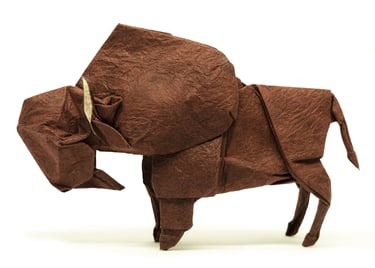
Bison (Bison bison)
2020, Japanese Momigami paper
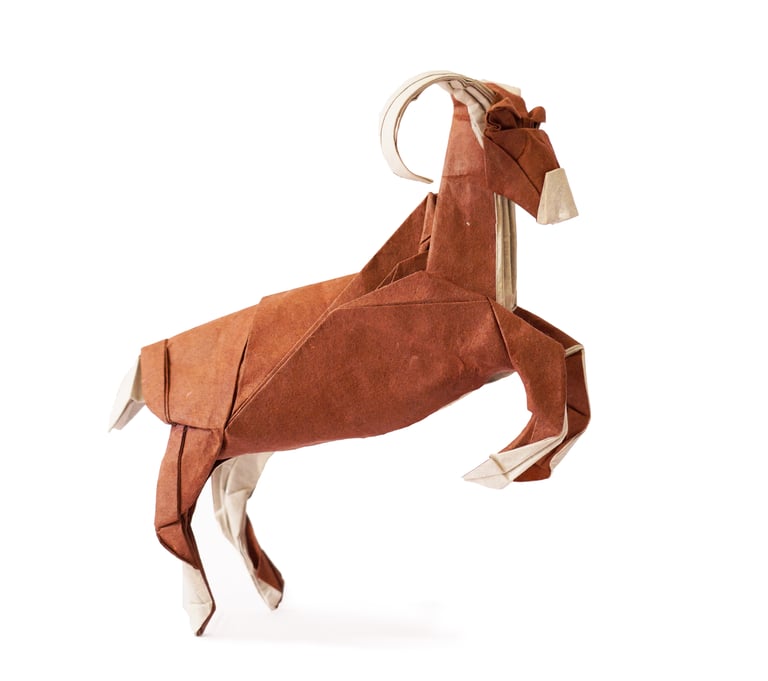

Bighorn sheep (Ovis canadensis)
2020, Agua papel

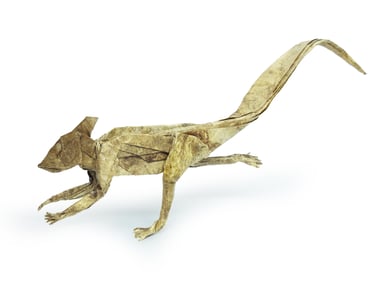
Toloque (Basiliscus vittatus)
2022, mulberry Amate
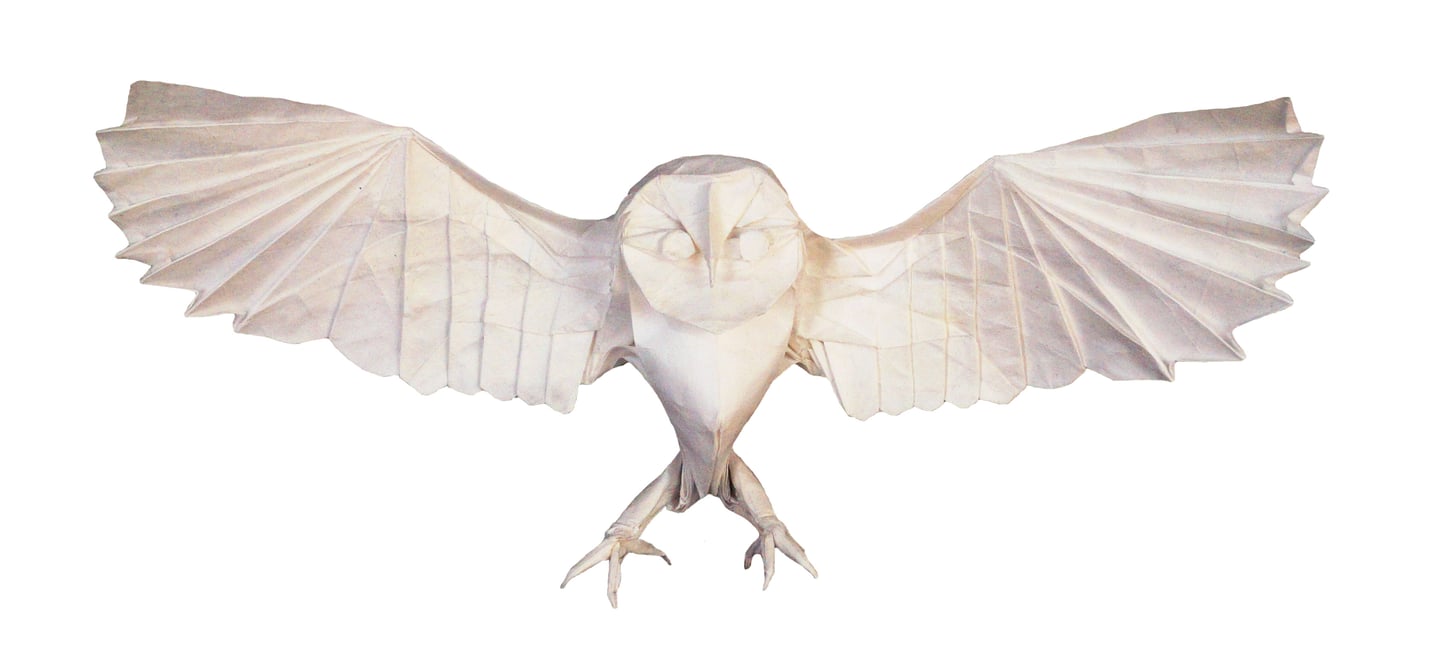

Barn owl (Tyto alba)
2022, mulberry paper
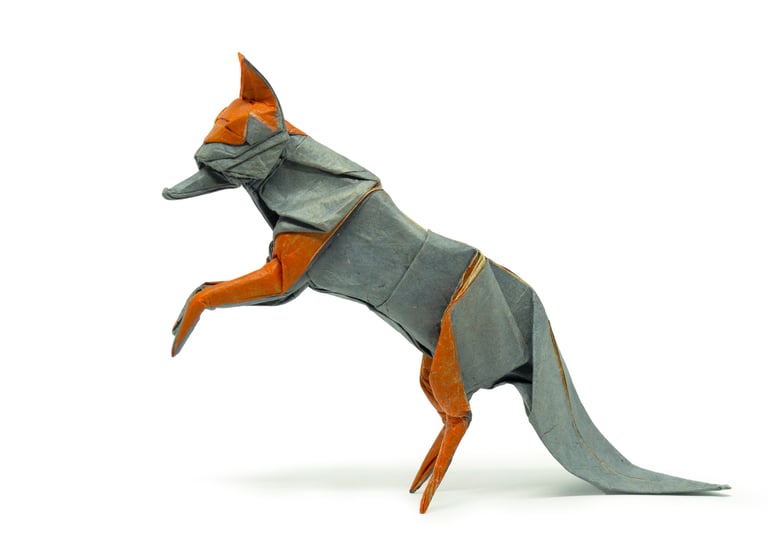



Gray fox (Urocyon cinereoargenteus)
2020, Nepalese Lokta paper
Xoloitzcuintle
2020, Japanese Unryu paper
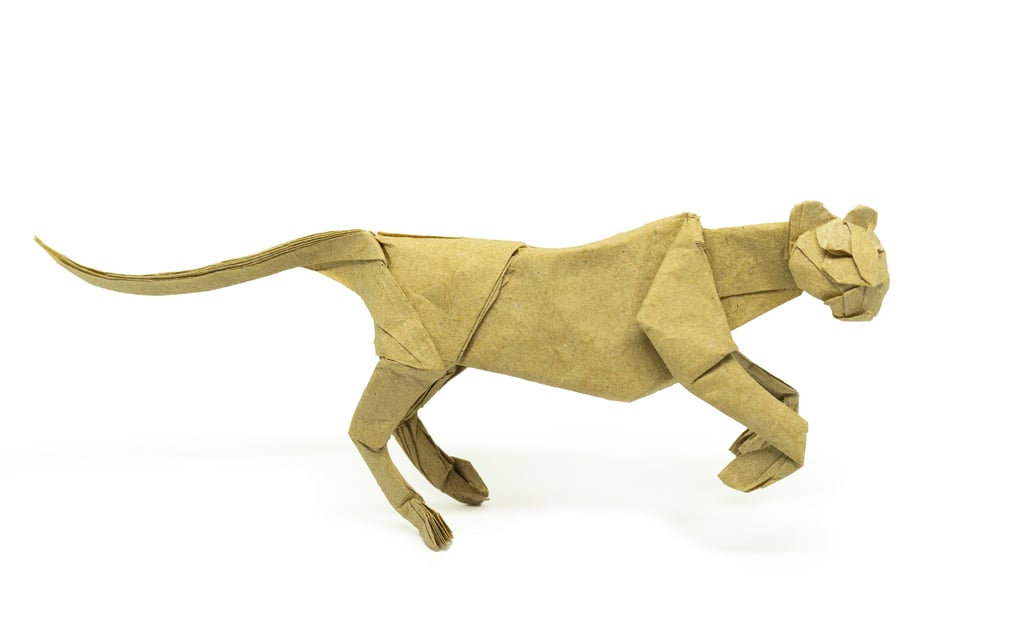

Puma (Puma concolor)
2021, Oaxacan Agave paper


Wapiti (Cervus canadensis)
2022, crepe paper


Linx (Lynx rufus)
2021, Agua papel
Volcano rabbit (Romerolagus diazi)
2020, Japanese Mingeishi paper


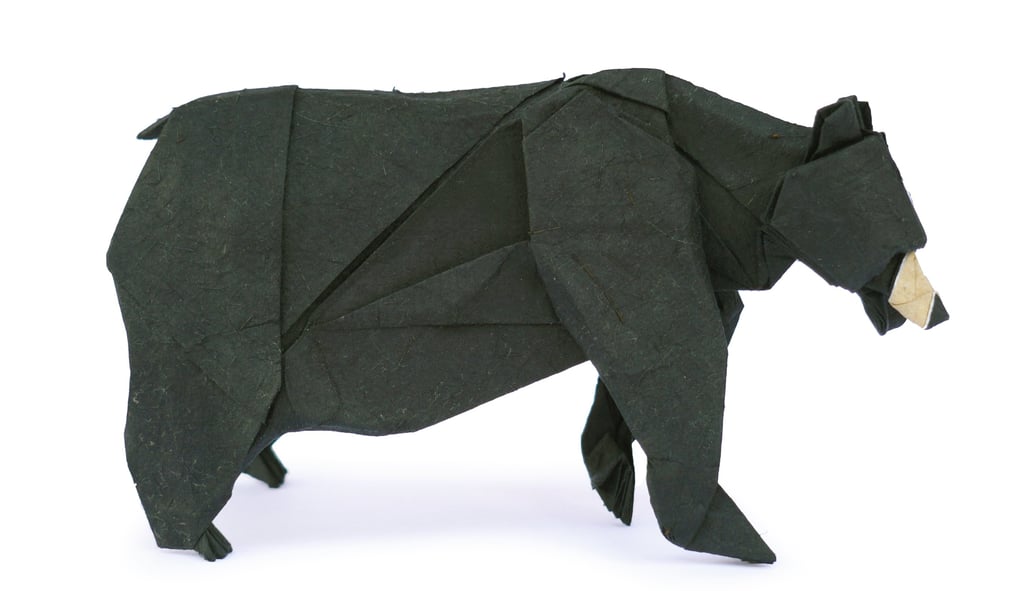

Black bear (Ursus americanus)
2022, Oaxacan Agave paper
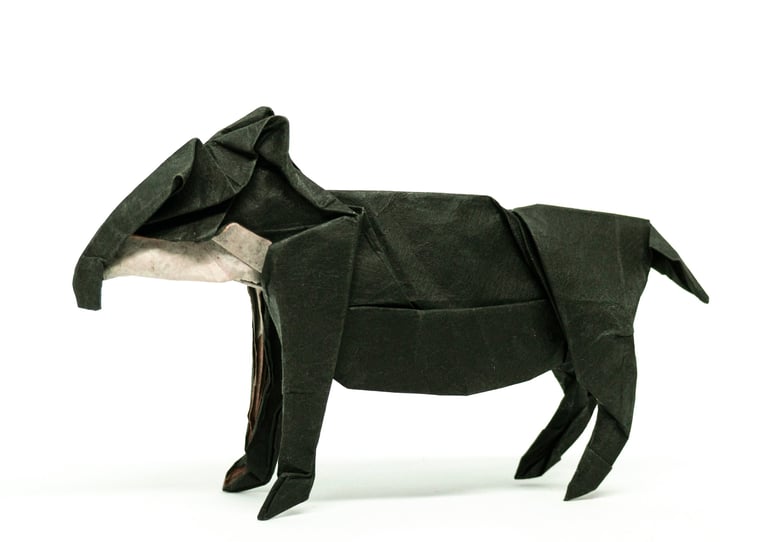

Centroamerican tapir (Tapirus bairdii)
2020, Japanese Mingeishi paper

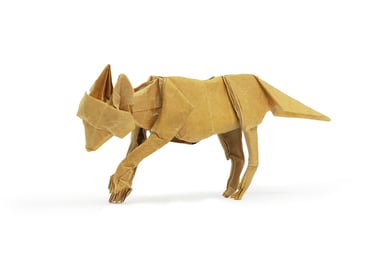

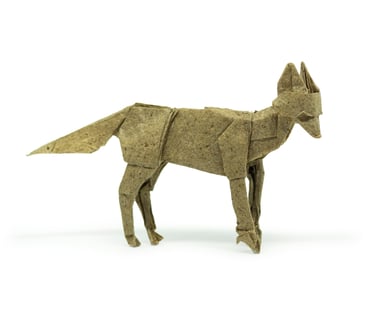
Coyote (Canis latrans), 2020, Oaxacan banana paper & tissue paper
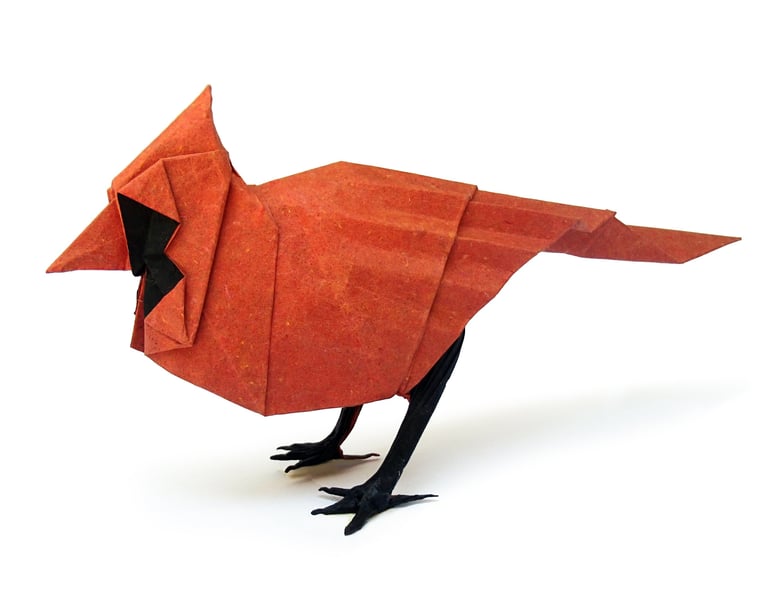

Northern cadrinal (Cardinalis cardinalis)
2020, Agua papel
Orchids have enchanted humans for millennia. Being the largest family of flowering plants, they display a vast array of shapes and colors both beautiful and complex.
It was thanks to the Cattleya by Michael LaFosse that I first got into orchids. That model pushed my curiosity on this flowers and years later I became an orchid specialist.
This series attemps to honour the flowers that changed my life.
Orchids
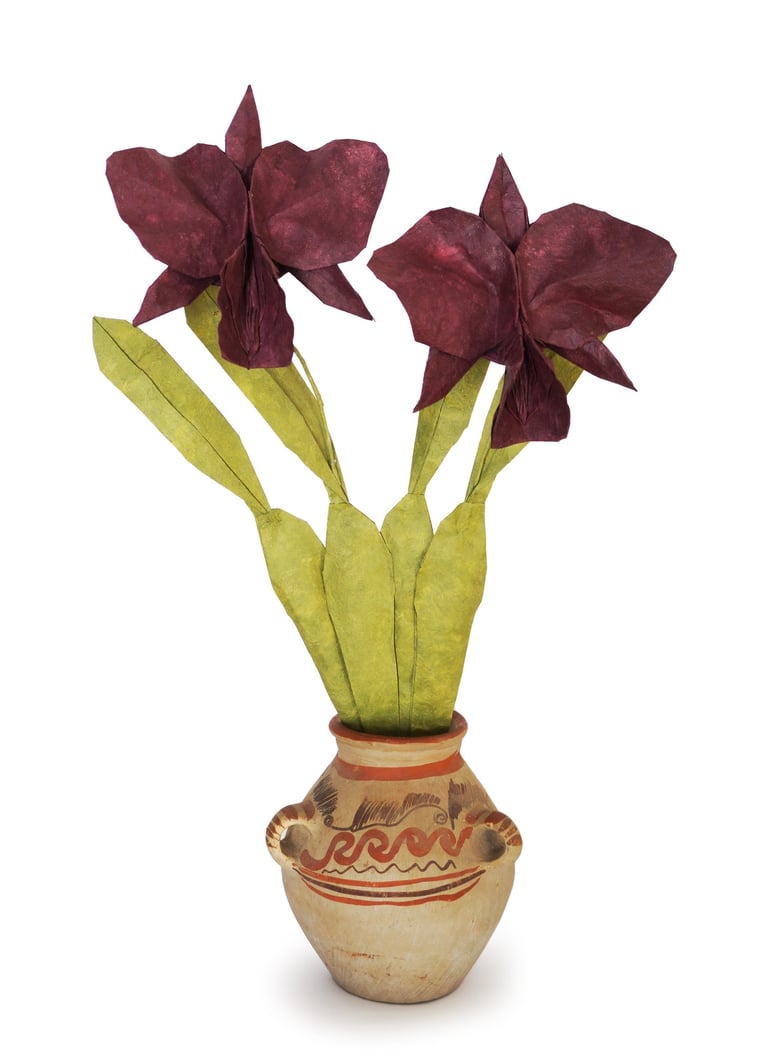

Cattleya orchid
2021, Mexican Amate paper
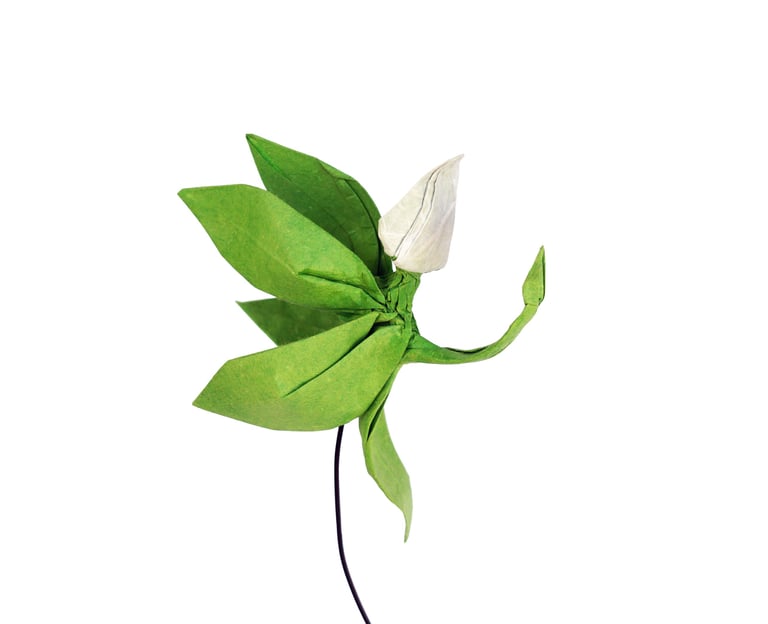

Cycnoches ventricosum
2021, Agua papel


Encyclia cordigera
2021, Japanese Mingeishi paper
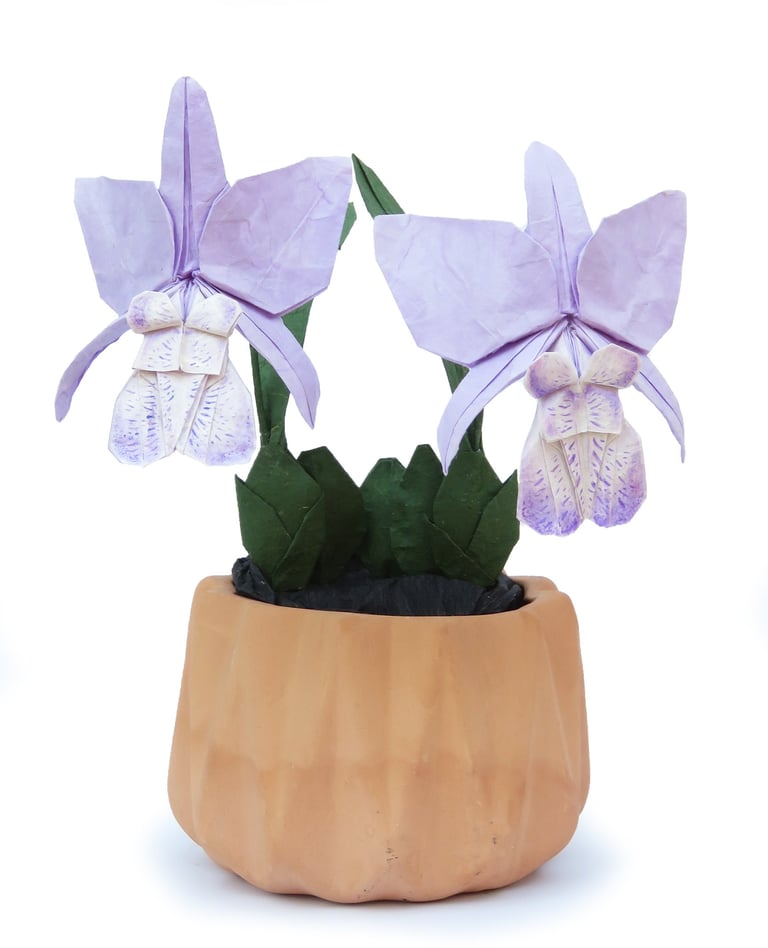

Laelia speciosa
2024, Japanese Unryu paper


Octopus orchid (Prosthechea cochleata)
2021, Agua papel
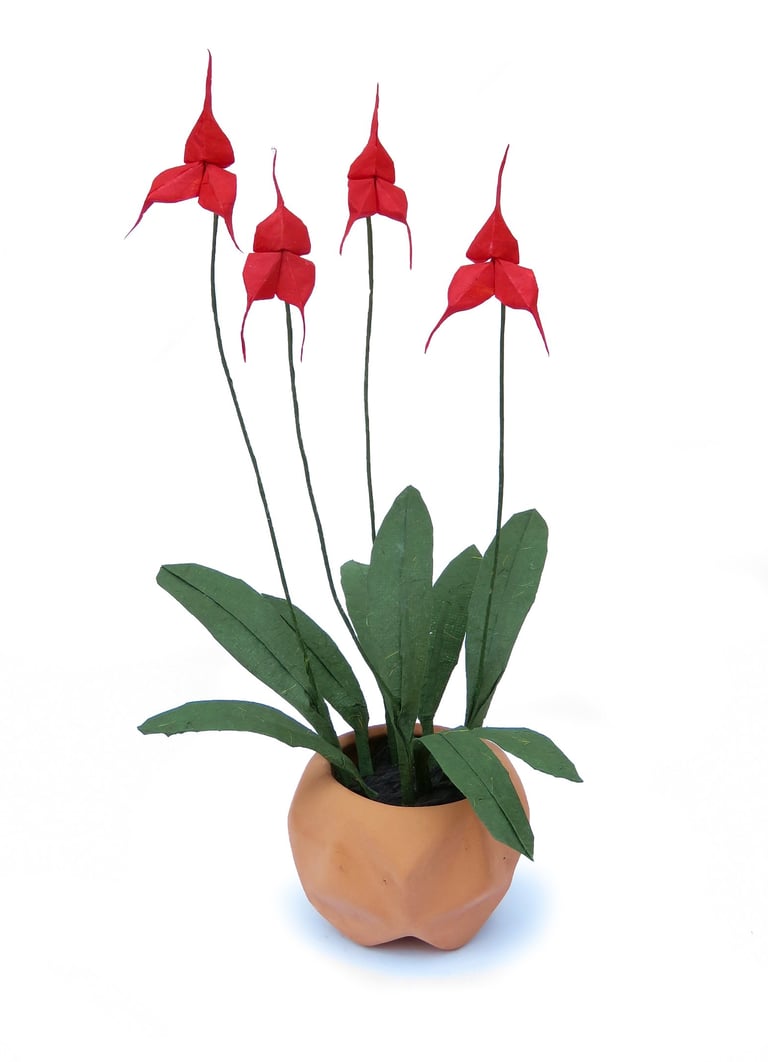

Wajanki
(Masdevallia veitchiana)
2025, Japanese Unryu paper & maguey paper
Pichohuaxtle slipper orchid (Cypripedium irapeanum)
2021, Japanese Unryu paper

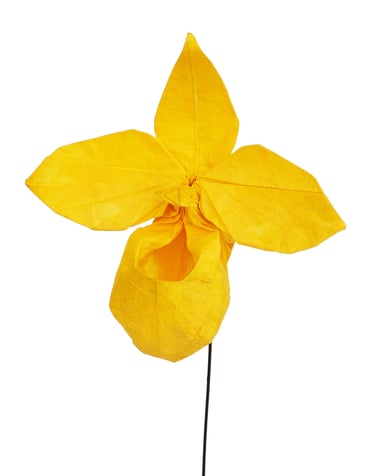


Stanhopea graveolens
2021, Japanese Momigami paper

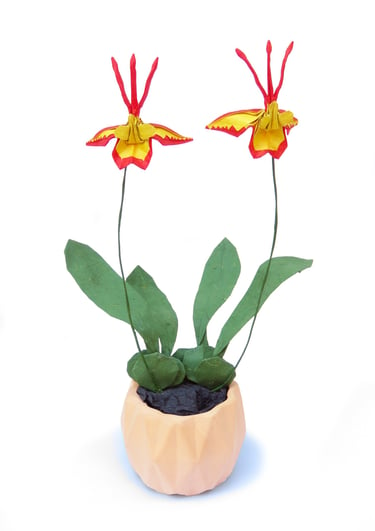
Butterfly orchid
(Psychopsis krameriana)
2025, Agua papel, Japanese Unryu & maguey paper
Bucket orchid (Coryanthes picturata) & Euglossini bee
2021, Japanese Unryu paper




Guaria morada
(Guarianthe skinneri)
2025, Agua papel & maguey paper
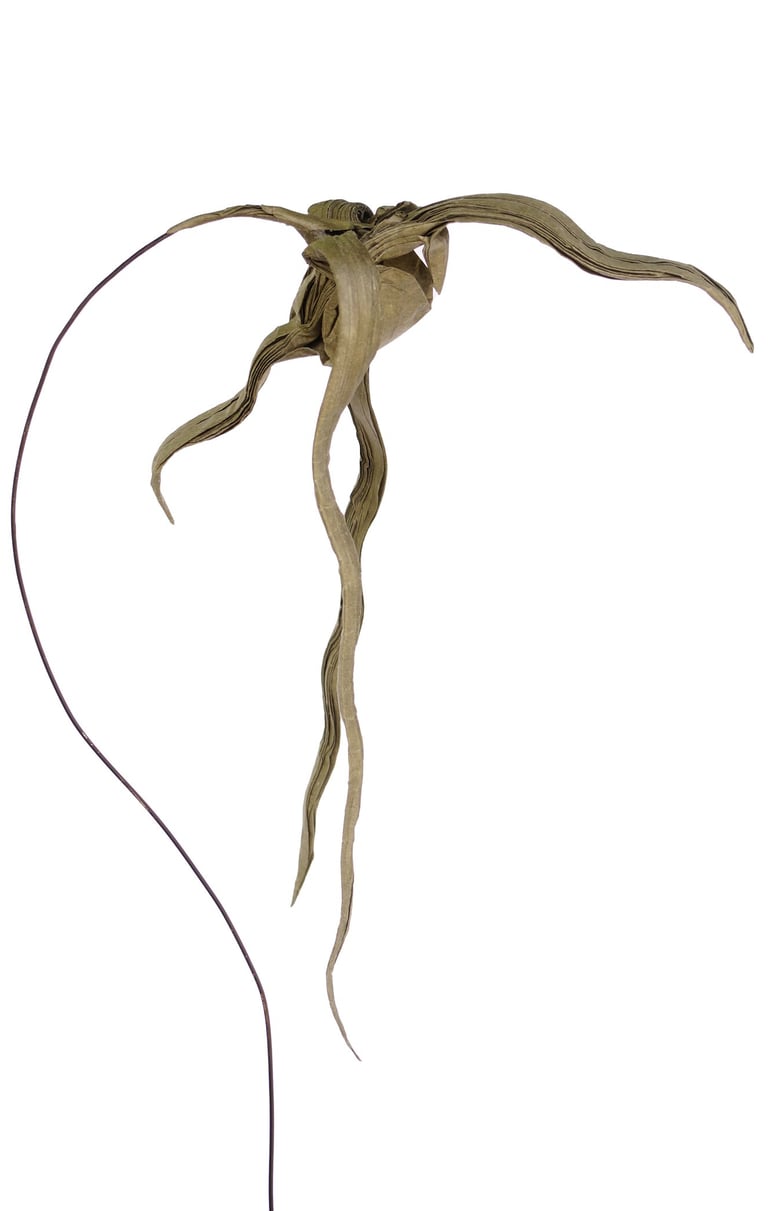

Long-petalled slipper orchid (Phragmipedium)
2021, Agua papel


Cattleya orchid
2024, maguey paper from Papel Oaxaca
Arthropods
Back in the ninethies a global movement challenged the limits of origami: the bug wars. Designers came to conventions showing paper-folded arthropods that were more complex each year, inspiring the development of new techniques and skills.
Nowadays most super-complex origami designs are detailled arthropods that include spurs, antenae, eyes and abdominal segments, all folded from an uncut square of paper. Some examples of such designs are shown in this series, as well as other simpler ones.
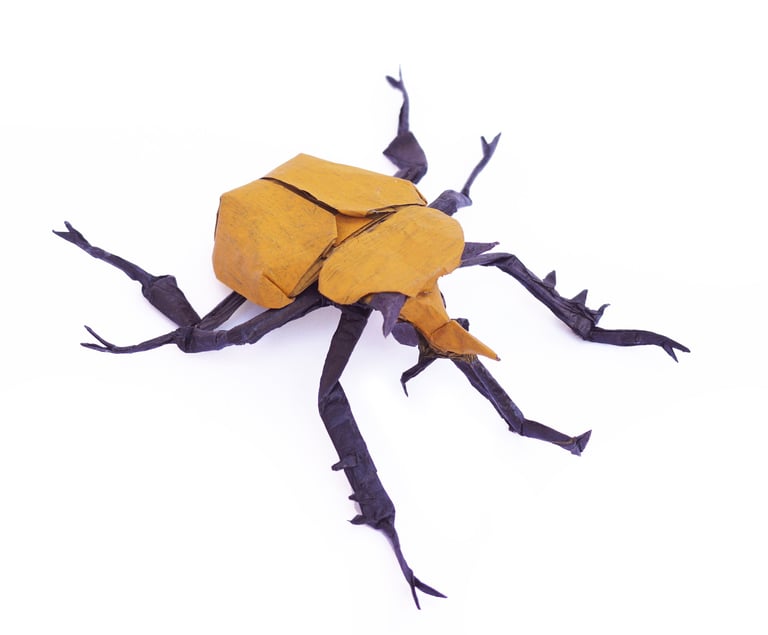

Occidental elephant beetle (Megasoma occidentalis)
2019, tissue paper + Agua papel
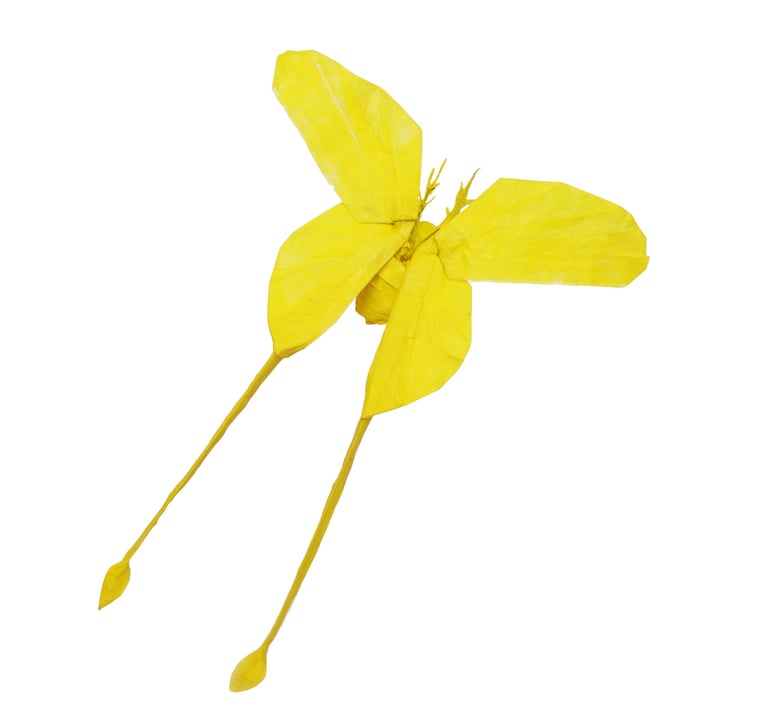

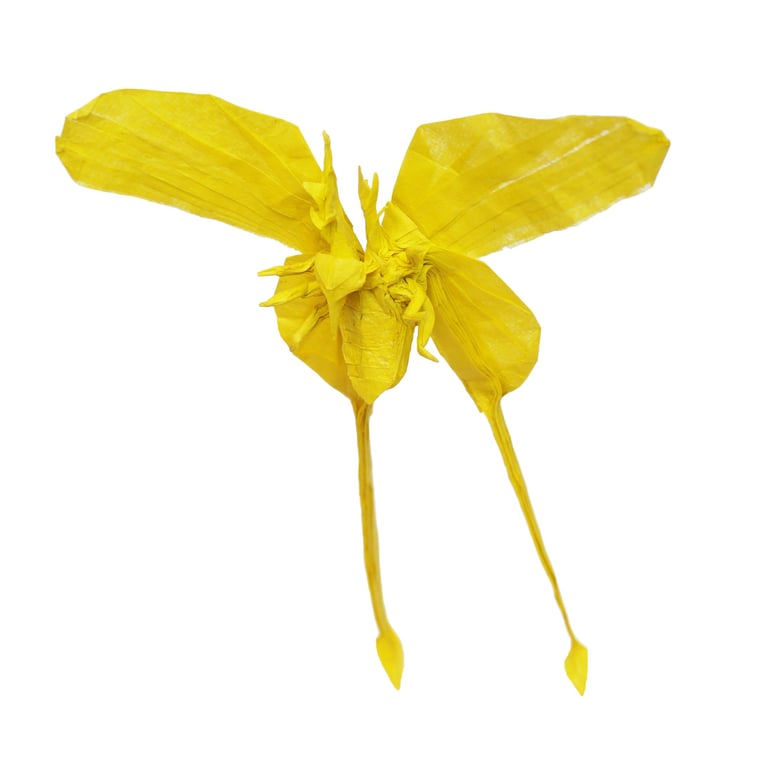

Chinese moon moth (Actias dubernardi) 2019, origamido paper
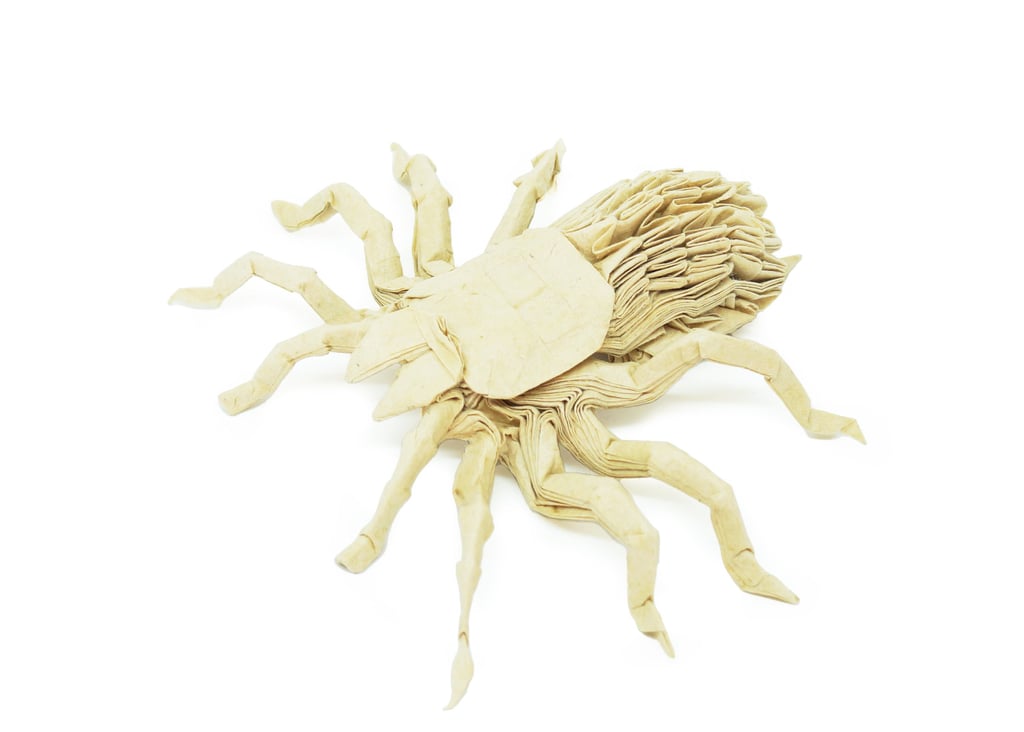

Texas brown tarantula (Aphonopelma hentzi)
2020, Vietnamese Dó paper
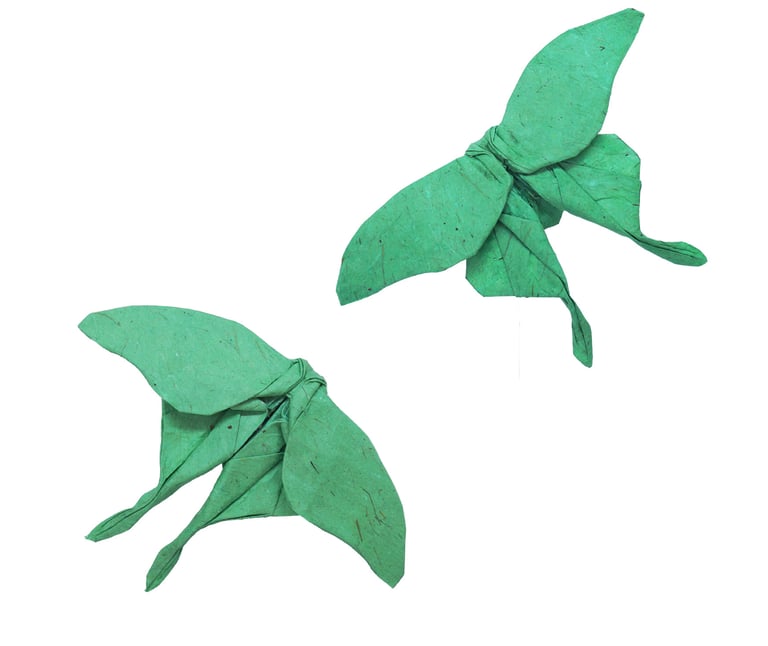

Mexican moon moth (Actias truncatipennis)
2020, Oaxacan Agave paper
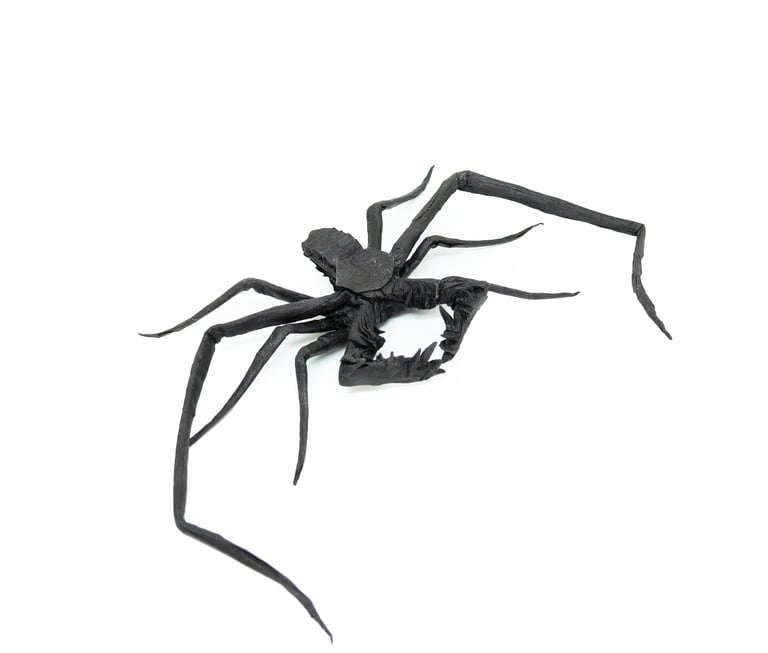

Mexican whip-spider (Paraprhynus mexicanus)
2019, origamido paper
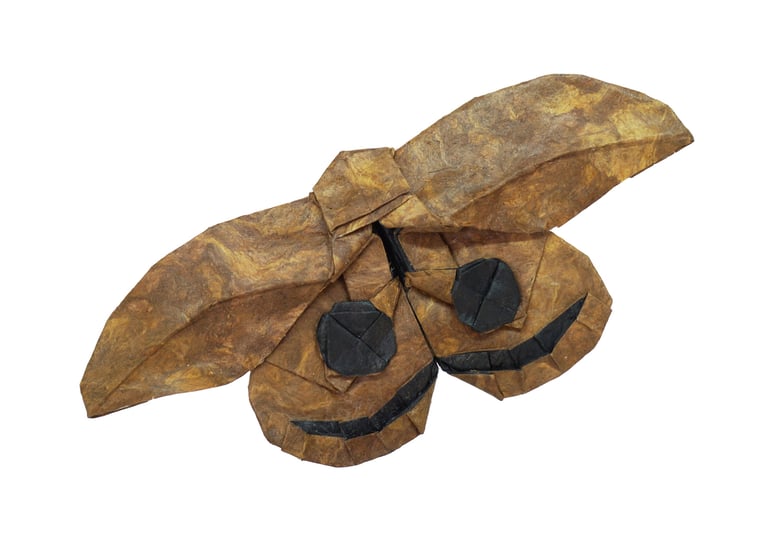

Automeris moth
2020, Mexican amate paper
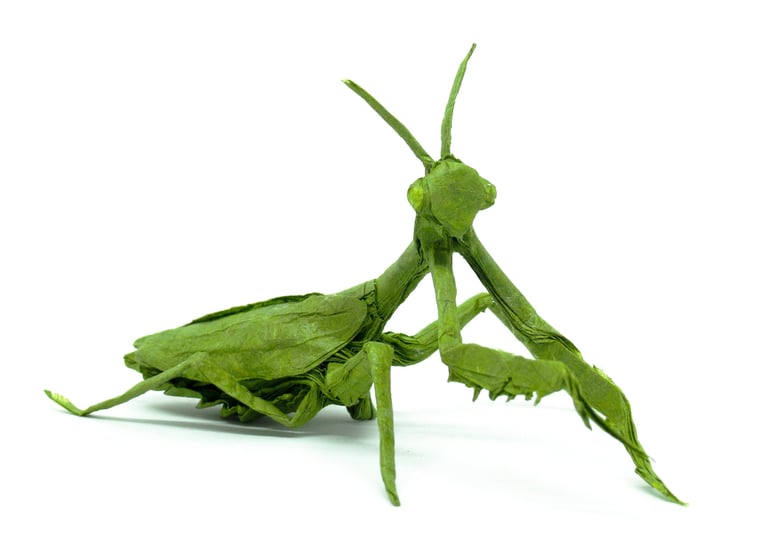

Bordered mantis (Stagmomantis limbata), 2020, Japanese Unryu paper
Animals of the world
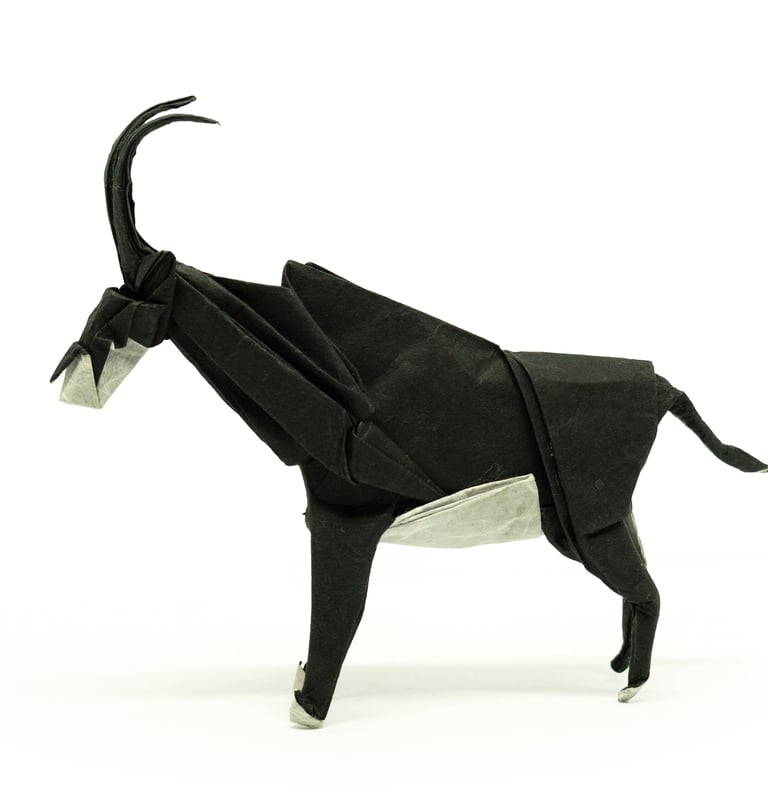

Since the traditional crane, origami has always been strongly inspired by nature in general and by animals in particular.
Designing accurate origami animals requires a lot of observation, and in the end, each piece contains the connection that has been stablished between the artist and the subject.
As Jacques Cousteau said: "We protect what we love, we love only what we understand".
Sable antelope (Hippotragus niger)
2020, Japanese Mingeishi paper
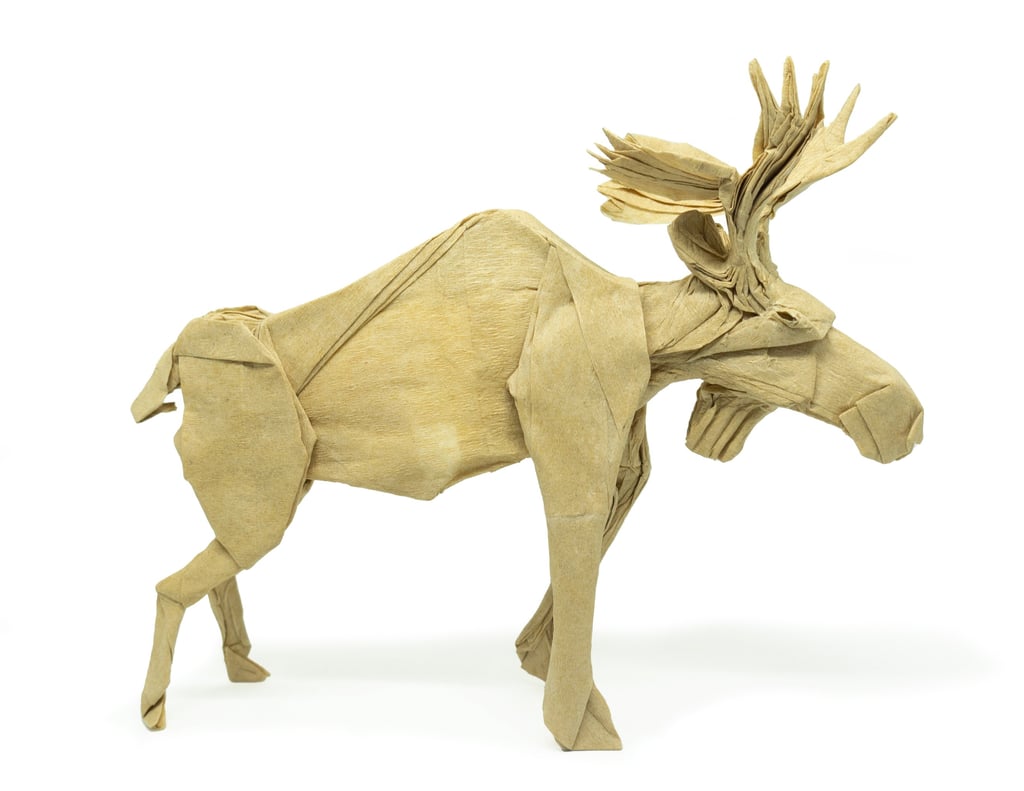

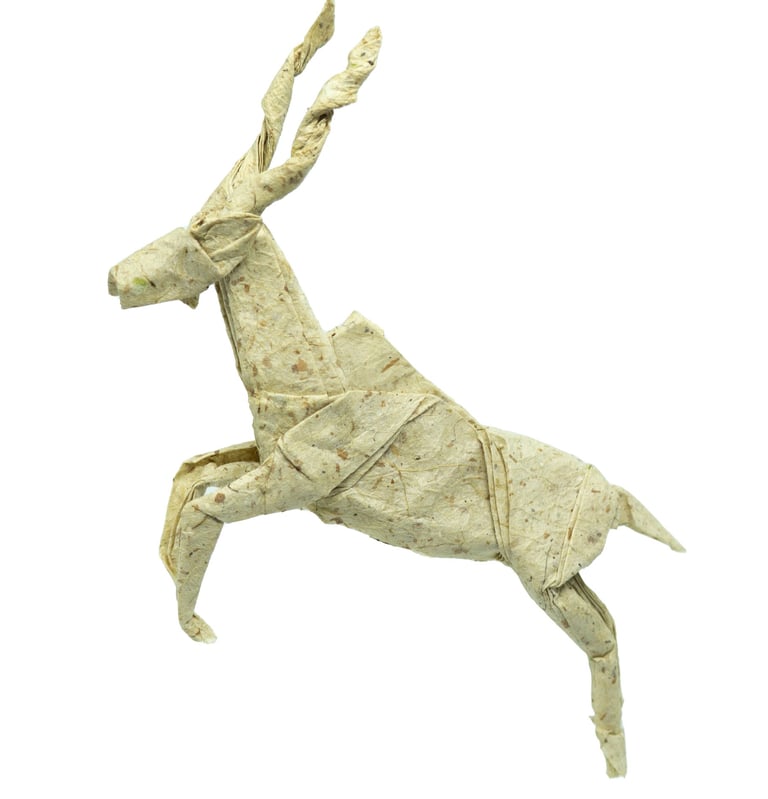

Jumping kudu (Tragelaphus imberbi)
2021, Oaxacan "frutilla" paper
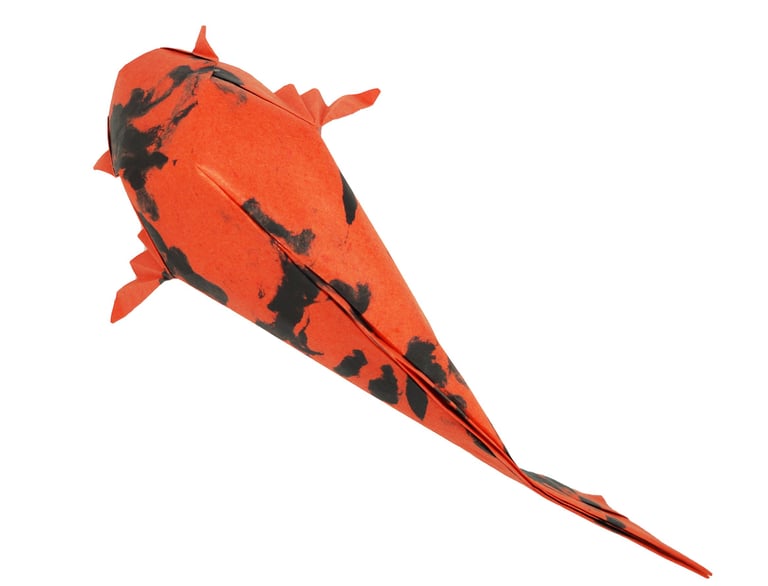

Koi fish (Cyprinus carpio var. koi)
2023, Origamido + hanji paper
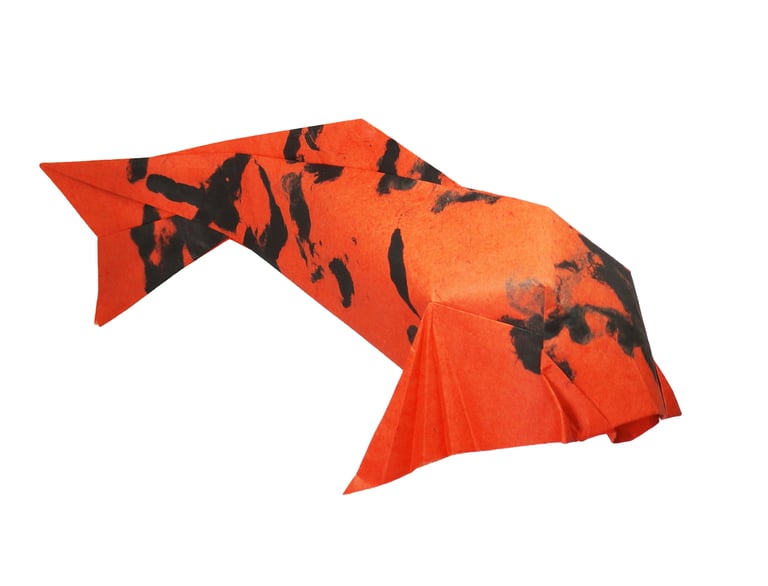

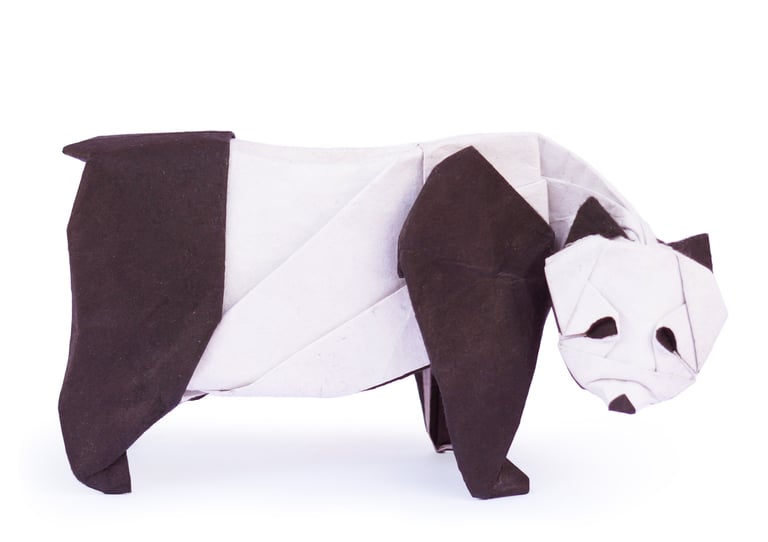

Giant panda (Ailuropoda melanoleuca)
2022, Japanese Mingeishi paper

